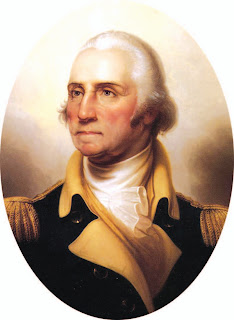 |
| Jim Kevlin/AllOTSEGO.com Elaine Downing, Oneonta, tries out the glasses Stereopticon expert Richard L. Copley developed as a simpler way to enjoy the 3D experience. |
At age 10, Richard Loren Copley bought his first photo darkroom, mail-order from Montgomery Ward.
As a high school student in West Milford, N.J., in the 1950s, he developed plans for a stereo tape recorder, which – as guitarist Les Paul was then doing – would also lay sound on sound.
One teen-age summer, he was a draftman for the Navy.
As he explained it in an interview, “I really enjoy the idea of recording life experiences as accurately as possible, both eyes, both ears, or whatever.”
So it was very much in character that, in the 1980s, he became intrigued with Stereopticon slides, those Victorian-era double images that, when peered at through a special viewer, turn flat images into 3D.
By that time, the former public-school teacher had retired from The Craftsman, a 150-artisan shop that he and wife Mary Ann operated on Dietz Street through the 1970s, to their Arnold’s Lake refuge.
First, a little background.
As Copley explains it, when we look at an object, each eye sees it from a slightly different angle. That slight shift is what allows us to see things in three dimensions – height, width and depth.
The old Stereopticons duplicate that.
At the outset, Copley tried to create that slight shift with one camera and a couple of mirrors, with no success.
So he went down to Woolworth’s, picked up a couple of $10 cameras, lashed them together side by side, ganged the shutter function, and there it was: One snap, two images from slightly different angle, and ...
Eureka! 3D.
“I took pictures all over,” said Copley.
He’d mail the film out to be processed and printed, then would paste the prints side by side.
“I didn’t have antique viewer, so” – the tinkerer again – “I made a couple of viewers with cheap magnifying glasses. One for myself. One for each of my kids.” (Son David is now a physical therapist in Burlington, Vt., and daughter Annette Holahan is a school psychologist outside Rochester; both were Milford Central valedictorian. There are eight grandchildren.)
Since, Copley’s collection has expanded, as he demonstrated at a lecture he delivered at the Oneonta History Center Sunday, Feb. 6, to a rapt crowd.
There was a two-lens camera from the 19th century.
There was an antique viewer, along with three or four dozen slides from Oneonta and Cooperstown. There was a second viewer from mid-century. And there were inexpensive glasses frames, made of cardboard, one Saran Wrap-like lens red, the other green.
As the 20th century neared its end, Copley had become interested in anaglyphs – two exact images, but chromatically different, usually one red and one green.
With those glasses on, the eye covered with the red lens only sees the green, and vice versa. The result: Another way to achieve the 3D effect.
Anaglyphs evoked a boyhood memory: Post World War II, some comic books used the method to allow young fans to view their superheroes adventures in 3D. Very cool, indeed.
You can imagine that someone of Copley’s inquisitiveness wouldn’t be interested in just 3D. As time passed, he wedded his Stereopticon discoveries with two of his early interests: English and history, his sub-subjects while studying to be a teacher at William Paterson University in Wayne, N.J.
Through the Web, he discovered the Library of Congress’ cache of Civil War Stereopticon images, made from the original glass negatives. He downloaded them, restored the images and, using a free app downloaded from the Web, created the matching red and green images.
The outcome was a book, “The Civil War: A History in 3D,” self-published in 2009. Inside each dust jacket is one of those cardboard viewers. You, the reader, yes, can experience the Civil War in 3D.
(Copley’s book is available for sale at the Oneonta History Center, The Green Toad Bookstore and The Farmers’ Museum gift shop, or through a Web site, www.civilwar3d.com)
Since then, Copley discovered another online cache of Stereopticon slides, this one at the New York State Library’s Web site, and he downloaded, restored and recreated two dozen slides of Otsego Lake and Cooperstown, and of Oneonta, primarily interiors of churches, but also some street scenes.
He made common cause with Bob Brzozowski, Greater Oneonta Historical Society executive director, and is in the process of borrowing and transforming as many local Stereopticon slides as he can locate.
“I’ve always been interested in finding as many views as possible,” Copley said, “getting them out of people’s closets to where the public can see them.”
So if you have any, here’s your chance to introduce them to a larger world: Copley will have his computer at the History Center 10 a.m.-noon on Saturday, March 5, to scan in any images the public may bring in.
He and Brzozowski are creating an album of the images that will be available for viewing at the History Center.
And if there’s sufficient interest, who knows? Perhaps “Otsego County: A History in 3D.”
 |
| Angie Neilsen and Bill Swain sample Stereopticon slides after Copley’s lecture at Oneonta’s History Center. |
 |
| Because of Cooperstown’s popularity as a resort, Copley found many Otsego Lake slides. |







